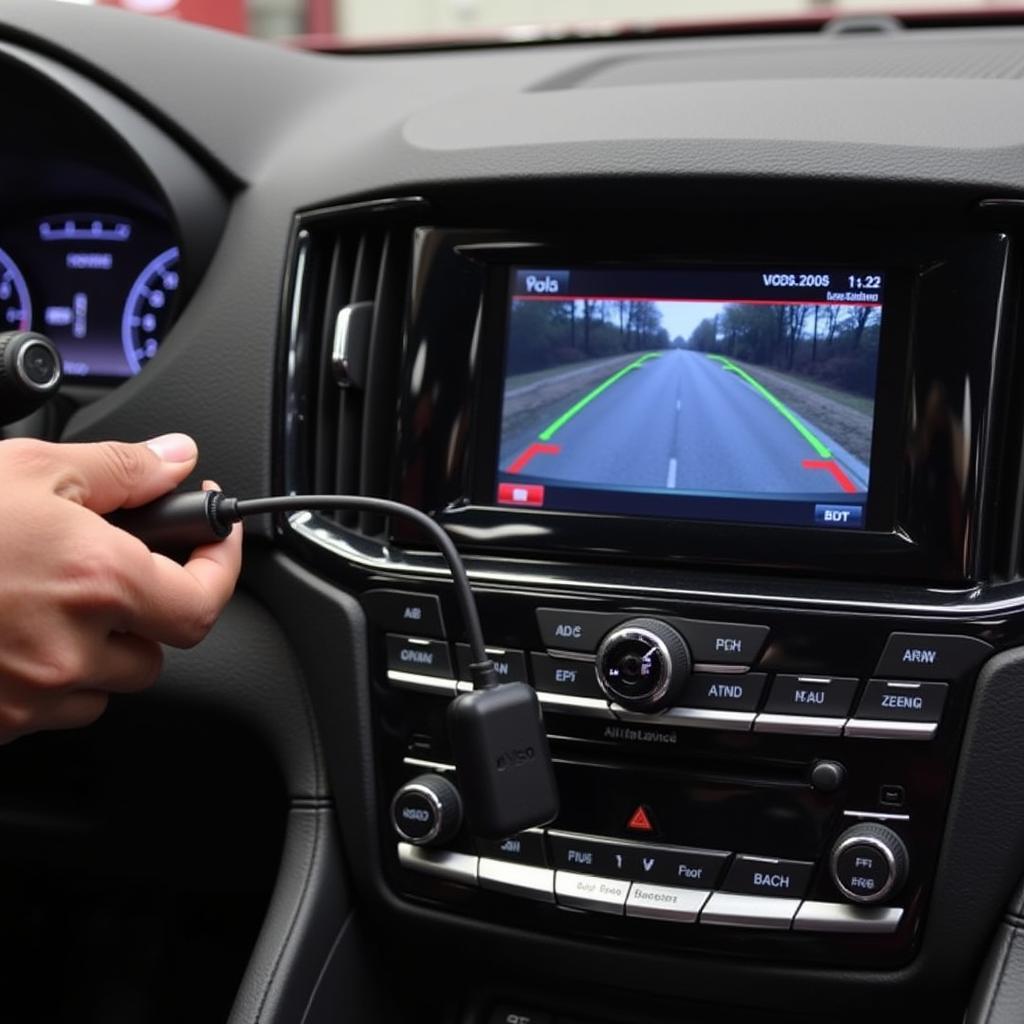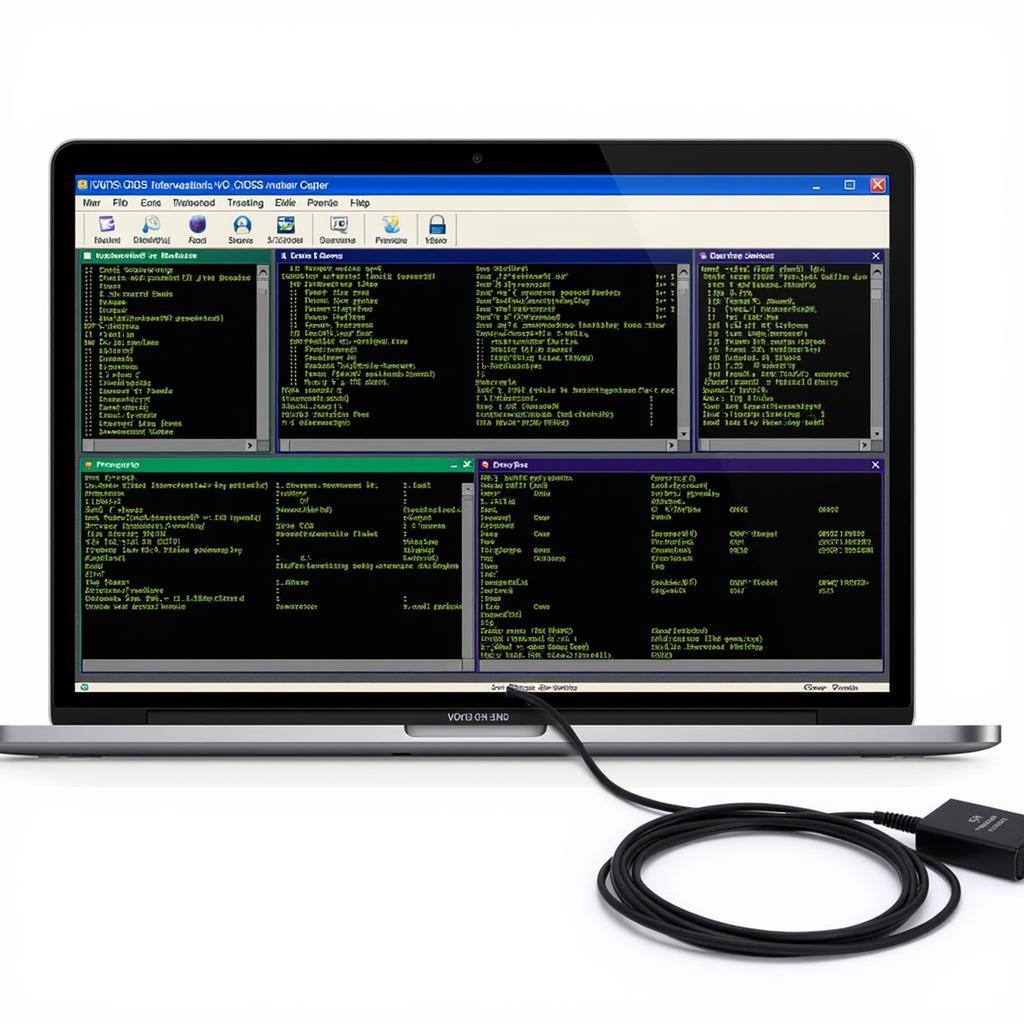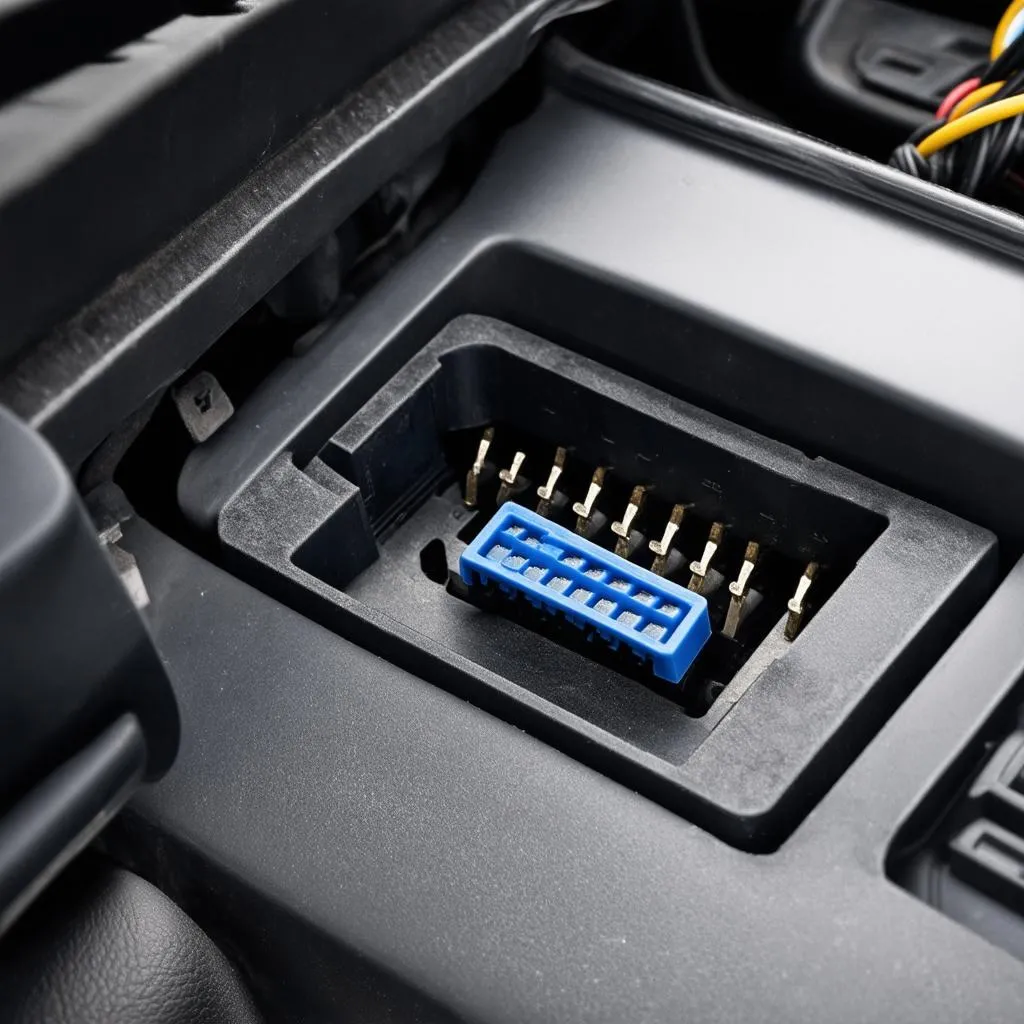VCDS, or VAG-COM Diagnostic System, is a powerful tool that allows you to access and modify the control modules in your Volkswagen, Audi, Seat, or Skoda vehicle. One popular application of VCDS is enabling and configuring a backup camera. This guide provides a detailed walkthrough of the process, covering everything from installation to troubleshooting.
Accessing the control modules within your vehicle’s network opens up a world of possibilities, from enabling hidden features to customizing existing ones. With VCDS, you gain granular control over your car’s functions, allowing you to personalize your driving experience. The installation of a backup camera, paired with VCDS coding, can significantly enhance safety and convenience, transforming the way you maneuver your vehicle.
One of the main benefits of using VCDS for backup camera installation is the ability to seamlessly integrate the camera with your car’s existing infotainment system. This allows you to view the camera feed directly on your car’s screen, providing a clear and convenient view of the area behind your vehicle. This integration eliminates the need for additional screens or displays, maintaining a clean and uncluttered dashboard. Furthermore, using VCDS ensures the backup camera functions optimally within your car’s system.
what is the best program to use for vcds
Understanding the Benefits of a VCDS Backup Camera
A backup camera provides a visual aid when reversing, drastically reducing the risk of accidents. This is particularly helpful in tight spaces or when visibility is limited. Beyond safety, a backup camera simplifies parking, making it easier to align your vehicle and avoid hitting obstacles. It also provides a better view of low-lying objects that might not be visible from the driver’s seat.
Choosing the Right Backup Camera for Your Car
Selecting the correct backup camera is crucial for optimal performance. Factors to consider include camera resolution, viewing angle, and mounting location. High-resolution cameras provide clearer images, while a wide viewing angle offers a broader perspective. Consider the specific model of your Volkswagen, Audi, Seat, or Skoda to determine the most compatible camera type and mounting options.
Step-by-Step VCDS Backup Camera Installation Guide
Before you begin, ensure you have the necessary tools, including a VCDS cable, the correct backup camera for your vehicle, and basic hand tools. The installation process typically involves running the camera wiring from the rear of the car to the head unit, connecting the camera to the reverse light circuit for power, and finally, coding the control module using VCDS.
Coding Your Car with VCDS for the Backup Camera
Once the hardware is installed, you need to use VCDS to activate and configure the backup camera. This involves accessing the correct control module within your car’s system and adjusting the appropriate settings. Specific coding procedures may vary depending on the vehicle model and year, so consult the appropriate resources for your specific car.
 VCDS Backup Camera Installation Process
VCDS Backup Camera Installation Process
Troubleshooting Common VCDS Backup Camera Issues
Sometimes, even after proper installation and coding, the backup camera may not function as expected. Common issues include a blank screen, distorted image, or intermittent operation. Troubleshooting these problems often involves double-checking the wiring connections, verifying the coding, and ensuring the camera itself is functioning correctly.
How to Diagnose Backup Camera Problems Using VCDS
VCDS can also be used to diagnose problems with your backup camera system. By accessing the relevant control modules, you can check for error codes and monitor live data, helping you pinpoint the source of the issue. This diagnostic capability is invaluable for quickly and efficiently resolving backup camera malfunctions.
“Regularly checking your backup camera system with VCDS can help prevent potential issues and ensure it remains in optimal working condition,” says John Miller, Senior Automotive Diagnostic Technician at CardiagTech.
Can I Install a VCDS Backup Camera Myself?
While the process is relatively straightforward, it requires some technical knowledge. If you’re not comfortable working with car electronics, it’s recommended to seek professional installation. However, with the right resources and guidance, many car owners can successfully install and code their own backup cameras using VCDS.
What are the Long-Term Benefits of a VCDS-Coded Backup Camera?
The long-term benefits extend beyond just convenience and parking assistance. By mitigating the risk of accidents, a backup camera can help you avoid costly repairs and insurance claims. It also enhances the overall driving experience, making reversing and parking less stressful and more enjoyable.
“Investing in a properly installed and coded backup camera can significantly enhance the safety and value of your vehicle,” adds Maria Sanchez, Lead Software Engineer at CardiagTech.
Conclusion
A VCDS backup camera is a valuable addition to any Volkswagen, Audi, Seat, or Skoda vehicle. It enhances safety, simplifies parking, and integrates seamlessly with your car’s existing system. By following this guide and utilizing the powerful capabilities of VCDS, you can unlock the full potential of your backup camera and enjoy a more confident and convenient driving experience. Remember to always consult the appropriate resources for your specific car model to ensure compatibility and proper installation.
FAQ
-
What is VCDS?
VCDS is a diagnostic and coding software for VAG vehicles. -
Do I need VCDS to install a backup camera?
While not strictly required, VCDS is necessary for optimal integration and functionality. -
Where can I buy a VCDS cable?
Genuine VCDS cables can be purchased from authorized retailers. -
What are the common problems with backup cameras?
Common issues include a blank screen, distorted image, or intermittent operation. -
Can I code the backup camera myself?
Yes, with the right resources and guidance, it’s possible. -
How much does a backup camera installation cost?
Costs vary depending on the camera and installation method. -
How do I troubleshoot backup camera issues?
VCDS can be used to diagnose and troubleshoot problems.
Common Scenarios:
- Scenario 1: The backup camera image is distorted. This could be due to a faulty camera or wiring issue.
- Scenario 2: The backup camera doesn’t activate when the car is in reverse. Check the reverse light circuit and coding.
- Scenario 3: The screen is blank when the car is in reverse. This could be a wiring issue, faulty camera, or incorrect coding.
Further Exploration:
For further information on VCDS, check out our article: what is the best program to use for vcds
Need Help?
Contact us for assistance. Whatsapp: +1 (641) 206-8880, Email: CARDIAGTECH[email protected] or visit us at 276 Reock St, City of Orange, NJ 07050, United States. We offer 24/7 customer support.


